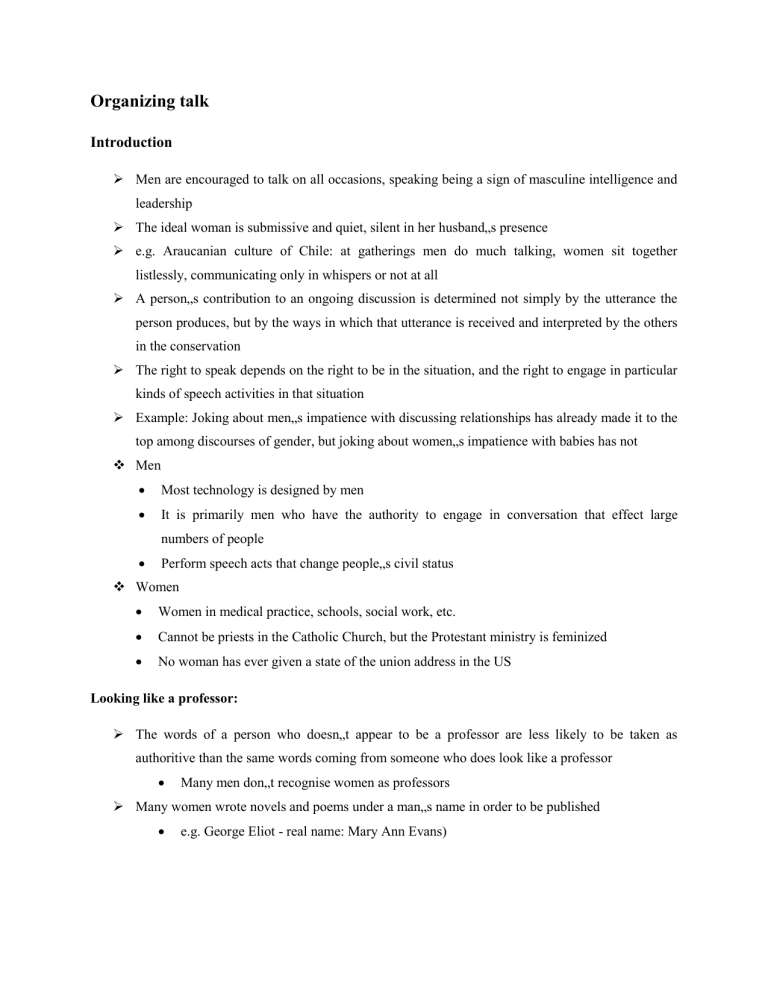
Organizing talk Introduction Men are encouraged to talk on all occasions, speaking being a sign of masculine intelligence and leadership The ideal woman is submissive and quiet, silent in her husband„s presence e.g. Araucanian culture of Chile: at gatherings men do much talking, women sit together listlessly, communicating only in whispers or not at all A person„s contribution to an ongoing discussion is determined not simply by the utterance the person produces, but by the ways in which that utterance is received and interpreted by the others in the conservation The right to speak depends on the right to be in the situation, and the right to engage in particular kinds of speech activities in that situation Example: Joking about men„s impatience with discussing relationships has already made it to the top among discourses of gender, but joking about women„s impatience with babies has not Men Most technology is designed by men It is primarily men who have the authority to engage in conversation that effect large numbers of people Perform speech acts that change people„s civil status Women Women in medical practice, schools, social work, etc. Cannot be priests in the Catholic Church, but the Protestant ministry is feminized No woman has ever given a state of the union address in the US Looking like a professor: The words of a person who doesn„t appear to be a professor are less likely to be taken as authoritive than the same words coming from someone who does look like a professor Many men don„t recognise women as professors Many women wrote novels and poems under a man„s name in order to be published e.g. George Eliot - real name: Mary Ann Evans) Networks: The division of labor works to allocate meaning-making opportunities not simply in the formal sphere, but in the informal sphere as well. Race, ethnicity, and gender all work to limit people’s sources of information gained in informal situations. Some of the most important institutional knowledge is gained, not in the classroom or the workplace, but at lunch, at dinner, in the carpool, on the squash court. But it is nonetheless real and often consequential. The individual’s professional network is a set of overlapping institutional, professional, and personal networks, and the way in which the individual combines these networks is extremely important for success. The threat of this is clearly greater for women than for men. Simply appearing in the role of homemaker or mother has often been damaging professionally for women. Appearing as the more powerless member of a couple is, needless to say, damaging. Appearing as a sexual being -whether in a conventional relationship or otherwise -- is more damaging to a woman’s professional image than to a man’s. A woman with children, particularly if she is single, is prevented from building networks on a variety of counts: the fact that her motherhood may be seen as conflicting with professionalism is compounded when domestic responsibilities interfere with professional activities and networking.




